There’s a particular kind of agony to getting dressed—when the outfit should work but doesn’t, when something feels off but refuses to be named. You swap a shoe, adjust a cuff, sigh at your reflection. Still, the feeling lingers.
I know it well. And in the early days of the pandemic, when dressing became both a lifeline and an afterthought, I found myself deep in Tibi’s Instagram style classes.
, the brand’s creative force, offered something beyond trends—she made style feel like a language, a system, a puzzle you could actually solve.While my infatuation with Tibi has waned (those price tags, alas, remain aspirational), her insights continue to shape how I dress. Over time, I’ve collected—and refined—principles from Amy and other style thinkers, methods I turn to when an outfit needs just one more thing. Maybe they’ll work for you, too.
This is a LONG one—best read in app or on the website!
The Three Words Method
Allison Bornstein may have popularized this concept (it even made the Guardian!), but Tibi has long championed this idea: define your personal style in three words, and let them guide your choices.
 Tiktok failed to load.
Tiktok failed to load.Enable 3rd party cookies or use another browser
Mine? Sensual, sharp, modern. These words act as a filter, a gut check for every outfit. If something feels off, I ask: Which word is missing?
If a look feels too serious, perhaps I’ve forgotten the sensual element.
If it’s all flowing fabrics, maybe it lacks the sharpness that makes me feel refined.
You can also dial each word up or down depending on your mood or occasion.
 Tiktok failed to load.
Tiktok failed to load.Enable 3rd party cookies or use another browser
The dream scenario? A wardrobe where every single item reflects those three words, making even the most basic pieces feel intentional. Realistically, those unicorn pieces are rare, but refining my words keeps my style evolving in a way that feels mine.
Beyond filtering, this method helps with inspiration without imitation. Instead of copying someone’s outfit, ask yourself: What is it that draws me in? Is it the relaxed tailoring? The bold accessories? The unexpected color pairings? Once you pinpoint the why, you can reinterpret it through your own three words—rather than falling into the trap of mimicry.
The Power of the Antonym: Contrast & Friction
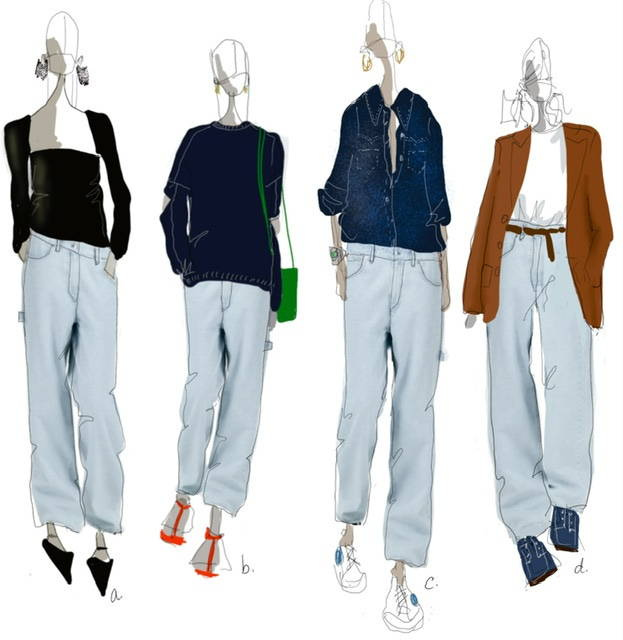
Ever put together an outfit that feels too… one-note? The solution isn’t always adding more—it’s adding contrast.
calls this “finding your antonym”: if your outfit feels too pretty, add something masculine. Too polished? Introduce something raw. Instead of asking what’s missing, ask: what’s too much? Then, counterbalance it.When you’re dressed, and unhappy with the outcome, find the one or two words that describe how your outfit is making you feel. Not how you want to feel. Don’t use phrases - like “not cool enough” or “not interesting enough.” Put to words how the outfit you are standing in is making you feel, right at this moment. Words like “Pretty, Feminine.” Or “Sporty, Masculine.” “Playful”. These aren’t bad words, but if you feel off, it is often because something is making you feel a singular way. One dimensional. And as humans, we have depth - makes sense that that’s what we want to convey. …
NOW that you have identified the word(s) to describe how you are feeling, to achieve the balance, i.e. “right the ship”, state the opposite. The antonym. The opposite of Pretty? Maybe it’s Masculine? Maybe you need something highly masculine to balance it out . A “pretty dress’ might feel more balanced mixed with a very mannish brogue. Did that work? Maybe “tough” is what you are looking for - a shoe with a strong point or adding a leather jacket. It’s not about starting a new outfit from scratch. Or even a wall of “outfit ideas.” It’s about understanding how to fix what’s ailing your style.
It’s the stylistic equivalent of tension in storytelling—without conflict, things fall flat.
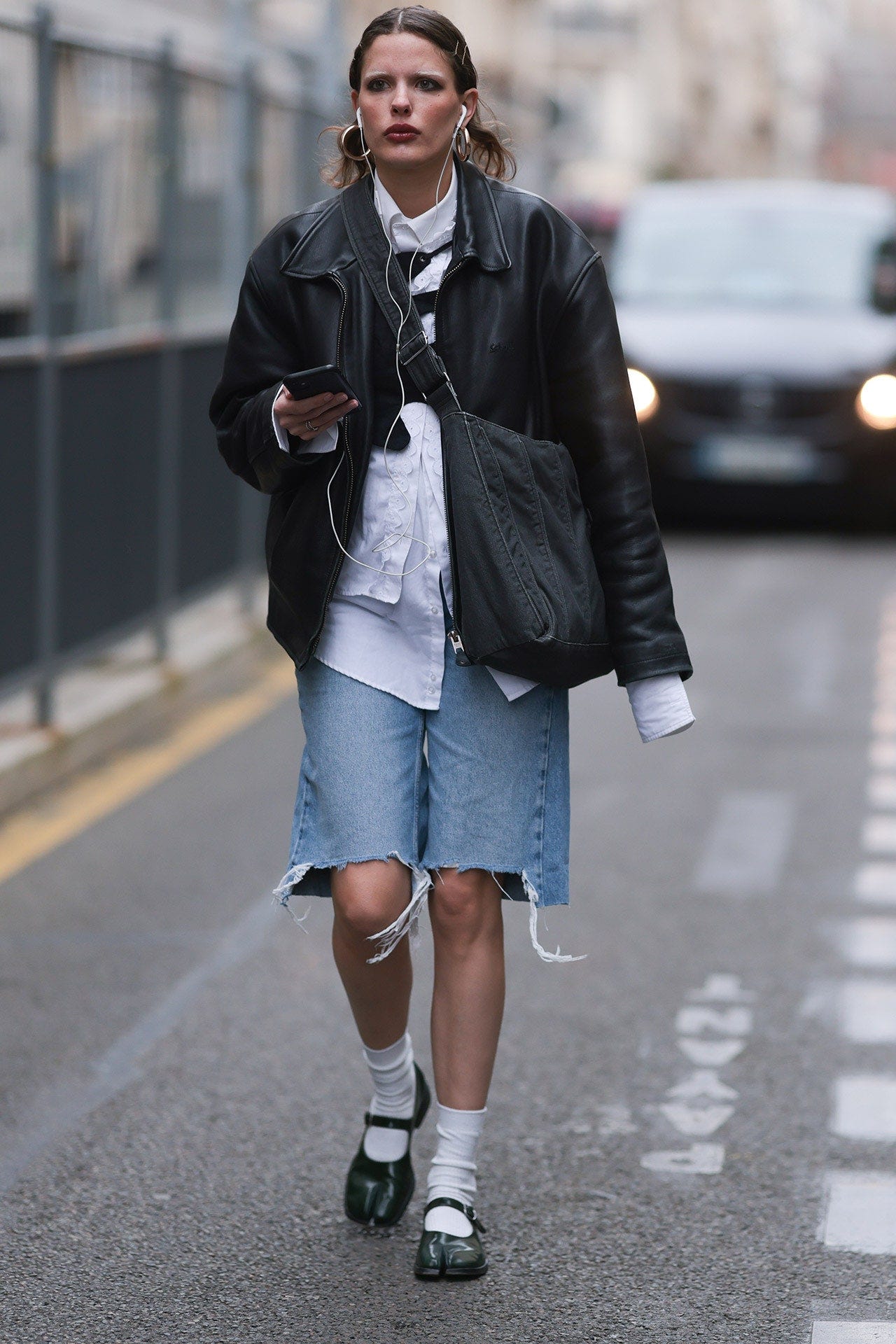
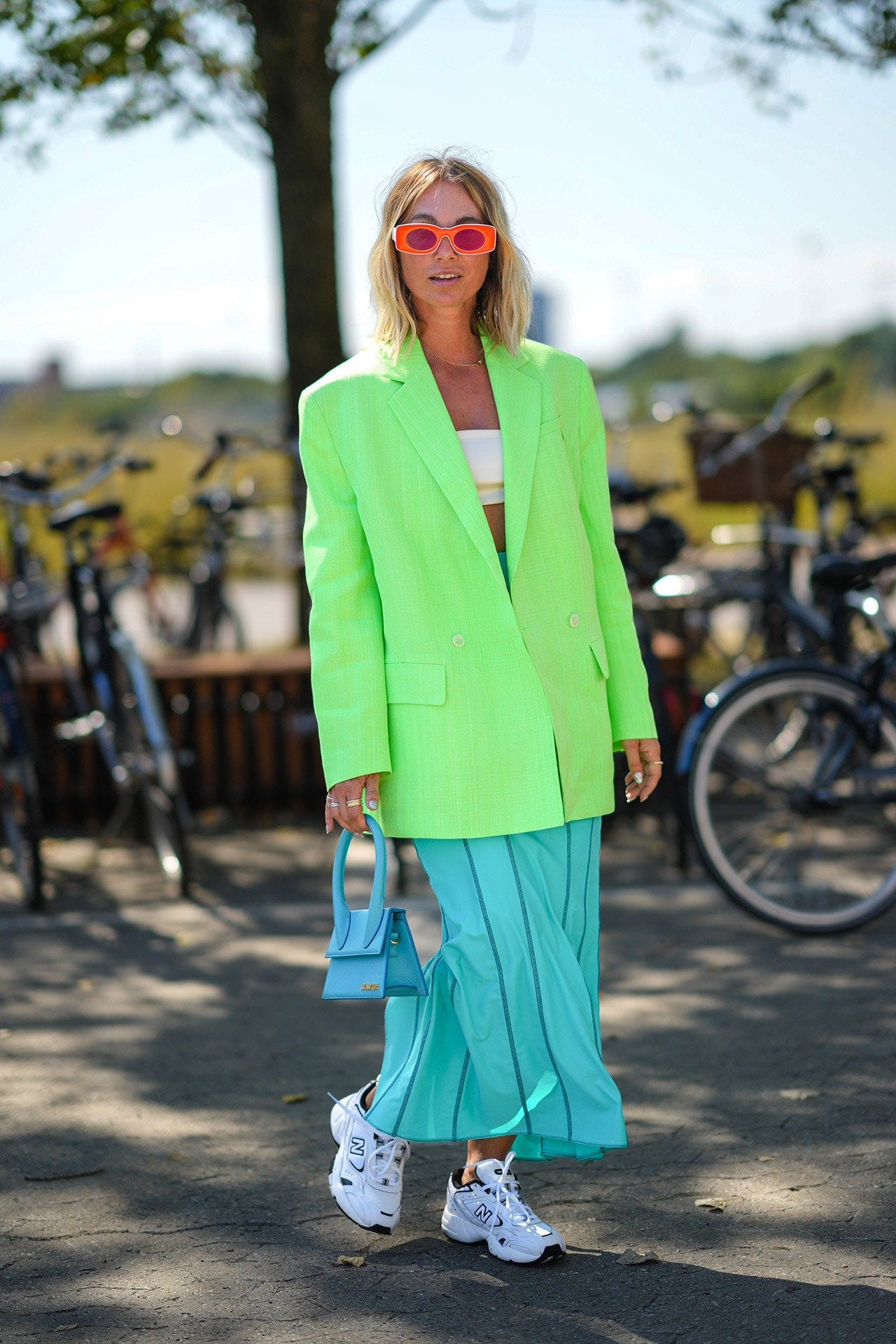
Think of the
‘s now infamous “wrong shoe” method: a delicate dress with chunky sneakers, track pants with a sharp slingback. The goal? Resist the urge to make everything match too perfectly. A little friction makes an outfit feel alive. had a deep dive on contrast dressing, and I wrote a whole style thesis on this!Tibi’s Big Slim Skin
Proportion can make or break an outfit, and
’s Big Slim Skin formula simplifies it into something instantly wearable:Big: Something oversized—slouchy blazer, wide-leg pants, boxy knit
Slim: Something fitted—sleek turtleneck, tailored trousers, body-hugging dress
Skin: A hint of exposed skin—bare ankles, a low neckline, sheer fabric.
had a great post on making this work even in cold weather!
It’s not that all-oversized or all-fitted is wrong, but mixing proportions introduces depth and movement.
An all-oversized look can feel overwhelming; an all-fitted outfit can seem restrictive. The magic happens in contrast—structure with ease, volume with definition, coverage with just a hint of skin. Even in cold weather, a sliver of ankle or a cuff pushed up makes all the difference.
Tibi’s Color Wheel
Forget traditional color theory—
‘s Tibi Color Wheel is about understanding how colors interact.She breaks colors into four rings:
Ring 1: Black – Strong, harsh, undeniably chic. The color of authority, of modernity, of cities at night.
Ring 2: Classic Neutrals – Tan, navy, brown, grey. The reliable foundation pieces, evoking a sense of structure, predictability, and tradition.
Ring 3: The Nuanced Neutrals – Colors that behave like neutrals but with more depth: caramel, sage, ochre, muted pinks. They’re the “ish” colors—green-ish, grey-ish, blue-ish. They soften, they ground, they add complexity without overwhelming.
wrote a great article on power of Ring 3 “no-color” colors!Ring 4: Saturated Colors – Brights and pastels, the attention-grabbers: cobalt, lavender, fiery red. These are the exclamation points in an outfit.
The magic happens when you combine these categories strategically:
Rings 1 + 2: The sharpest, most put-together pairings. They read serious, sophisticated, even a little formal.
Ring 1 (or 2) + Ring 3: This is where nuance lives. Pairing black with a deep cinnamon brown or a dusty green adds complexity without disrupting the sleekness. It’s a way to make black feel softer, more layered, less expected.
Ring 2 + Ring 4: This mix creates contrast—classic + playful. If you’re seeking calm, this pairing can feel too jarring.
When in doubt? Use Ring 3 as a base—colors that aren’t loud, but aren’t boring either.
If you prefer video, this is a must watch.
Youtuber Christina Mychas also does a good job translating this:
If all this is too confusing, I love
‘s personal take on this:Irene Kim’s Lever System
Think of an outfit like a seesaw—each piece tilts the balance.
‘s Lever System is about making small adjustments that shift an outfit’s tone (more examples here!).A sweater and jeans with sneakers? Casual.
Swap sneakers for heels and add a red lip? Now it’s dressy.
Keep the sneakers but trade jeans for a silk skirt? Relaxed yet refined.
The power of this system is its ease—it lets you tweak an outfit rather than overhauling it.
Rachel’s Last Minute Addition
We’ve all heard the old adage about taking something off before you leave the house. But what if the key is actually adding something?
On good days, getting dressed feels effortless. But when something feels slightly off, aLast Minute Adjustment (LMA) inspired by
could be the fix:Pushing up your sleeves
Tucking in your top in an unexpected way
Adding an extra ring or switching out a shoe
These small shifts can turn hesitation into confidence in seconds.
Even more ideas here thanks to
!And maybe even use this as a challenge to evolve your style?
“If you are wearing your go-to look, challenge yourself to change one thing. It can be small like swapping your white tee for a black one. Or adding ONE extra ring to your stack. While this won’t necessarily make a huge difference to others, it will feel different to you and that slow evolution is what fashion is all about. Take it slow and do what feel comfortable and eventually you will be more elevated than you could have imagined!”
Style Your “Hows” With Your “Regulars”
The problem: We all have pieces we wanted to wear but never actually do—the sculptural heels, the patterned skirt that felt like a good idea at the time, the structured top that doesn’t quite fit into our usual rotation.
calls these your “How”s.The solution: Pair them with your Regulars—the pieces that never fail you.
Instead of reinventing your style overnight, create balance between the new and the known.
That statement top suddenly feels wearable with your go-to jeans.
Those bold shoes seem less intimidating when paired with your favorite sweater.
It’s not about playing it safe—it’s about letting experimentation feel effortless.
has a whole video diving into how she styles her “how"s:Bringing It All Together: How to Use These Ideas
OK, that’s a lot of theory—so how do you actually use it?
The next time you’re staring at your reflection, wondering why your outfit feels off, try this:
✅ Check your three words – Does your outfit reflect the identity you’ve defined? What word could you dial up (or down?)
✅ Find the antonym – Too ladylike? Too corporate? Add its opposite for depth.
✅ Adjust proportions – Too much volume? Add a fitted piece. Too stiff? Introduce movement.
✅ Tweak your color mix – Too stark? Too loud? Use the color wheel for balance.
✅ Pull a lever – Make one small swap to shift the tone.
✅ Try a Last Minute Adjustment (LMA) – A sleeve push, a tuck, an unexpected detail. Play with textures, layers, color, proportions.
✅ Match your “Hows” with your “Regulars” – Let the familiar anchor the bold.
✅ What’s the one thing I can add today that feels like me?
The beauty of these principles? They don’t require a new wardrobe—just a new way of seeing your clothes.
Style isn’t about rigid rules. It’s about understanding how small shifts create impact. The more you practice, the more intuitive it becomes.
And the only real question worth asking: Does it bring you joy?
Other ideas I’ve loved but haven’t fully incorporated:
highlighted the Tiktok outfit math system—great way of testing if your outfit is too simple OR too much!Building on color,
‘s “One, Ton, None”:Tibi’s rule of three to both add depth AND simplicity


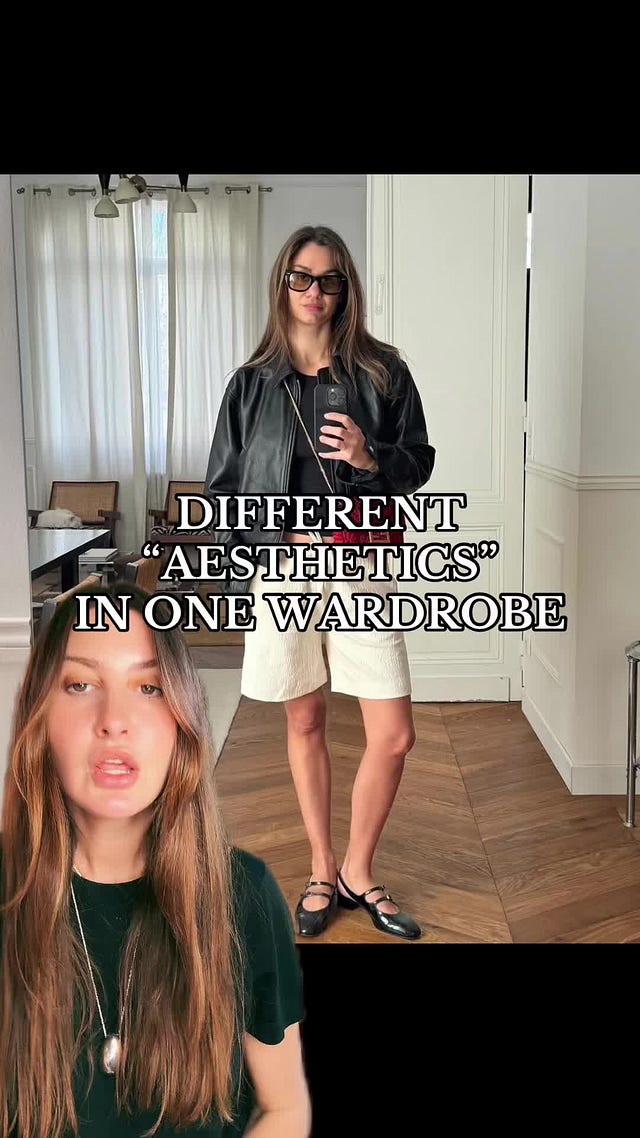
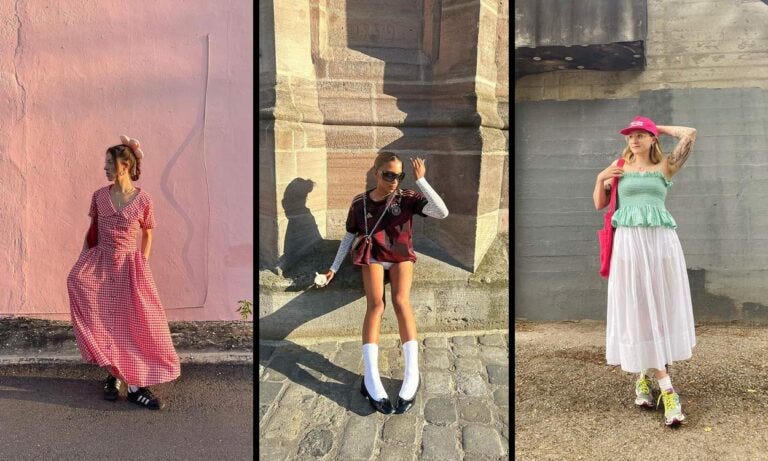


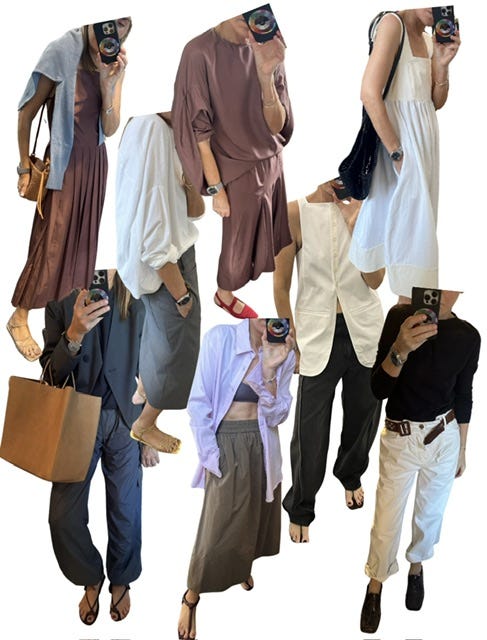
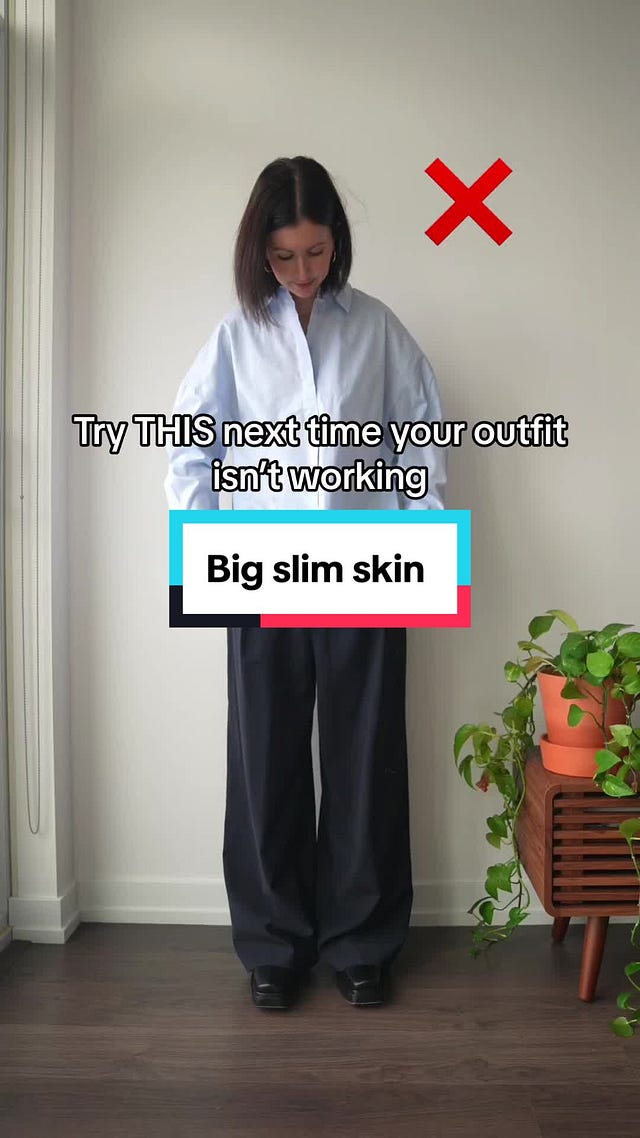
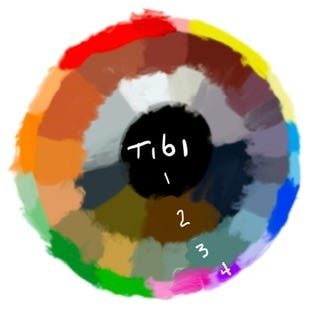
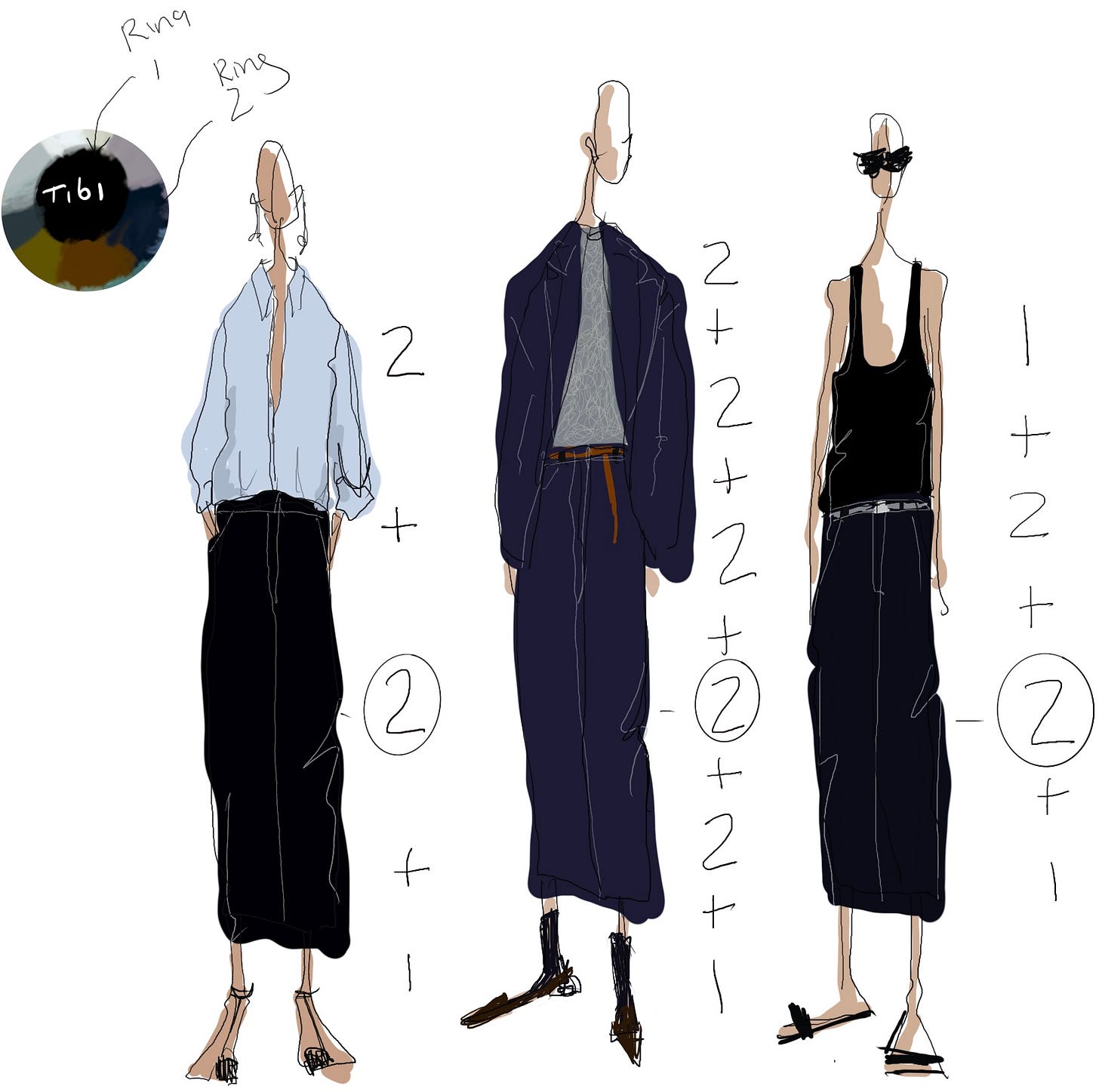
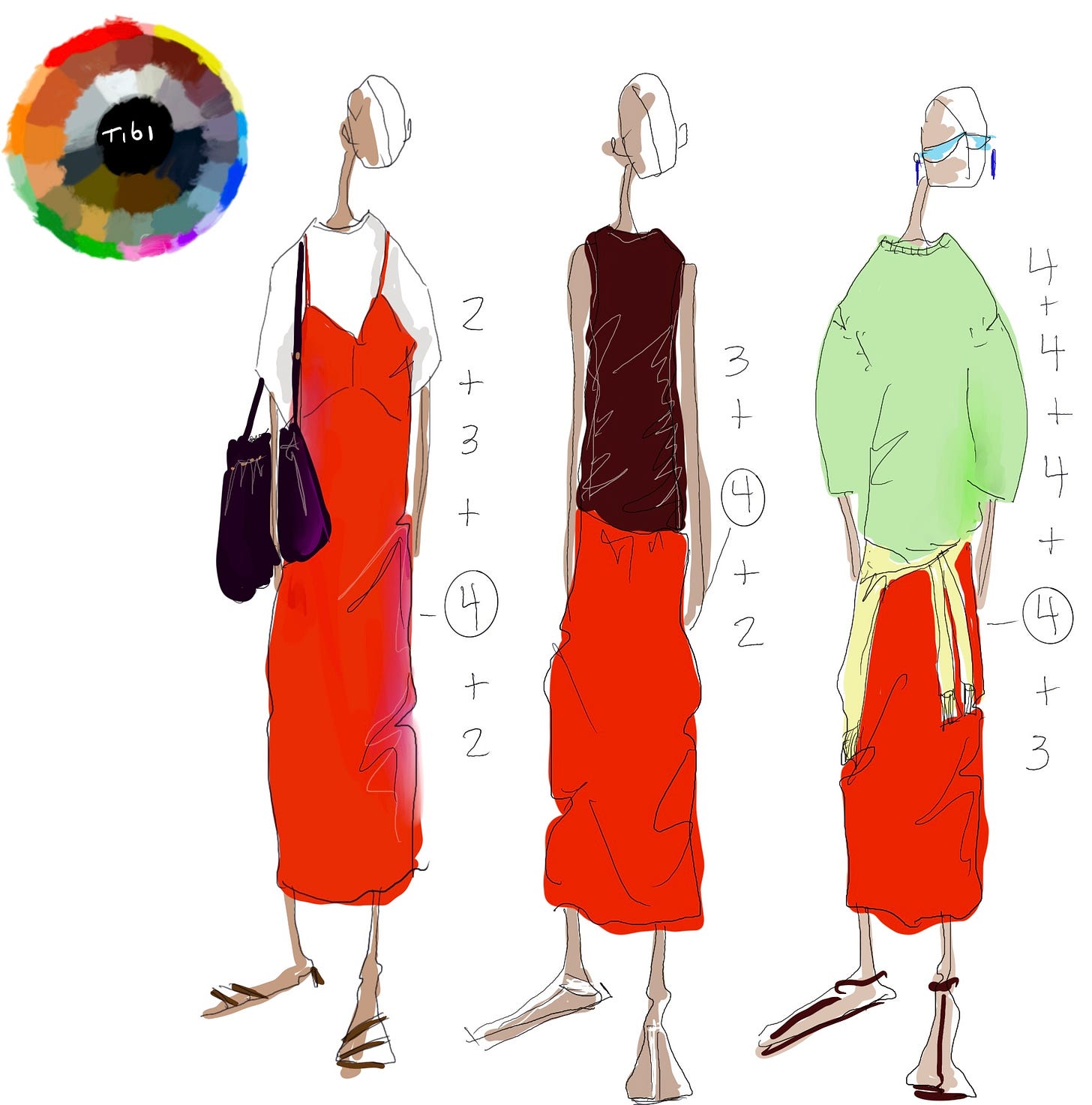
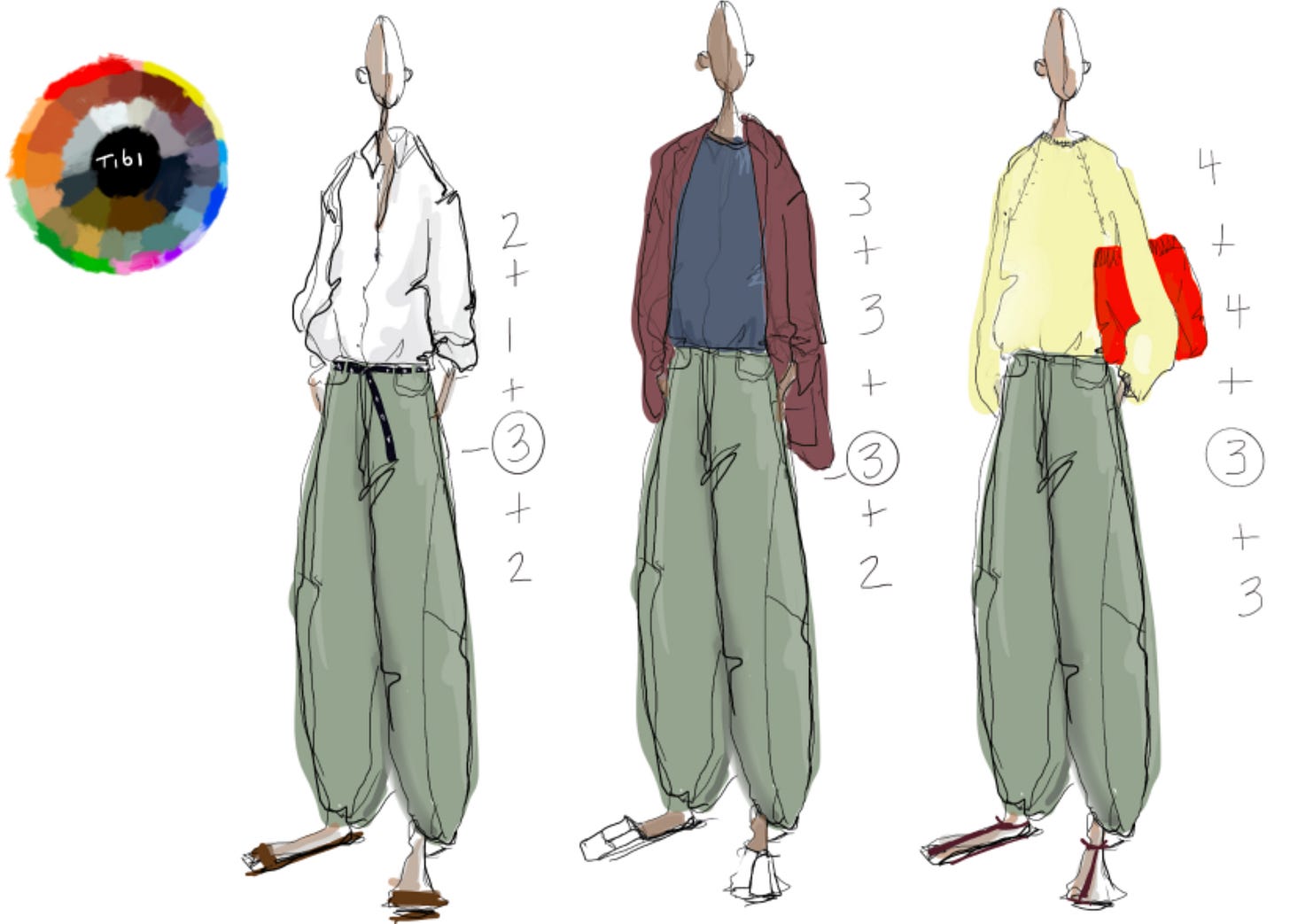

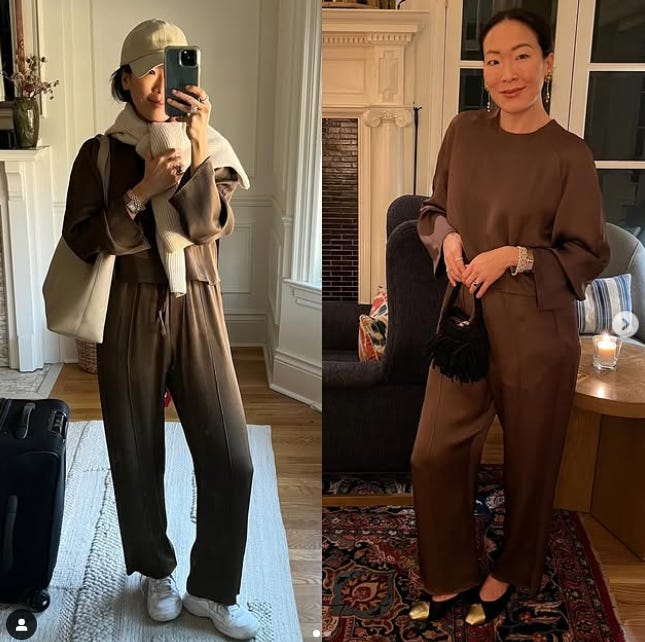

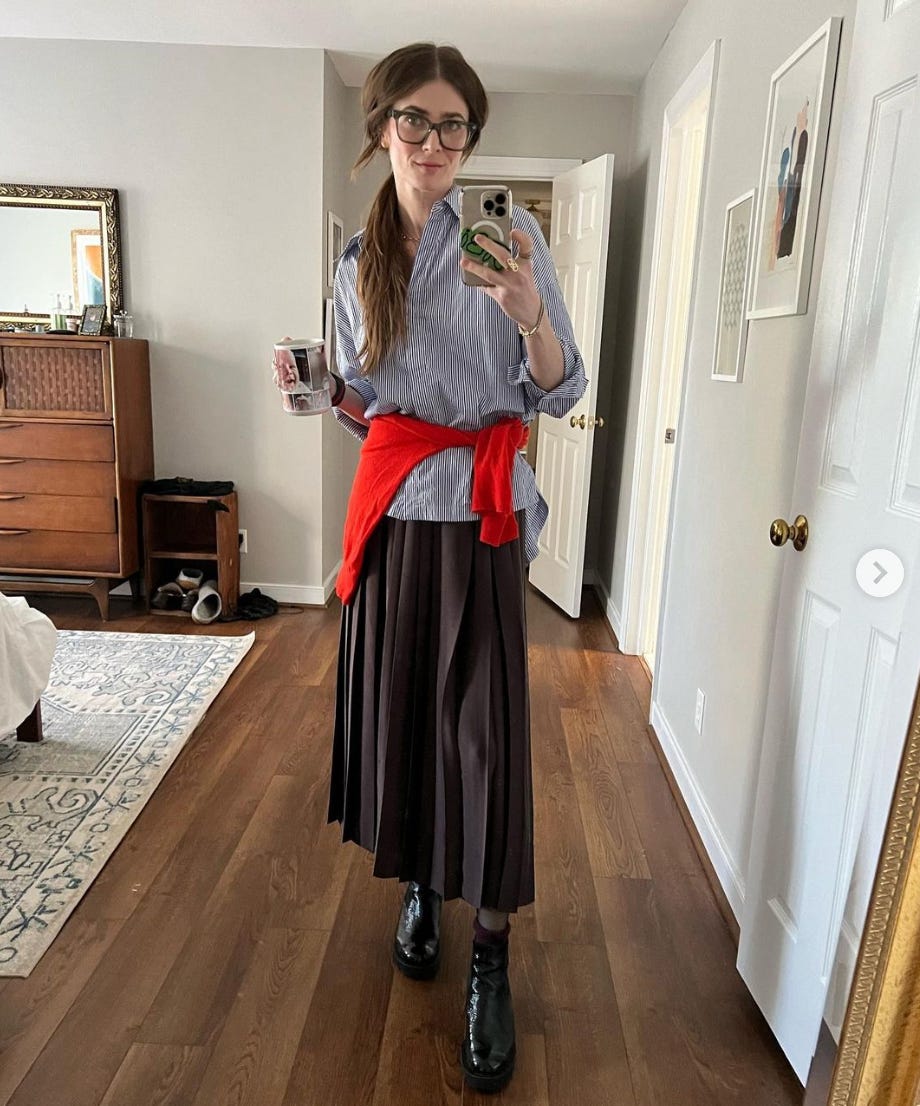
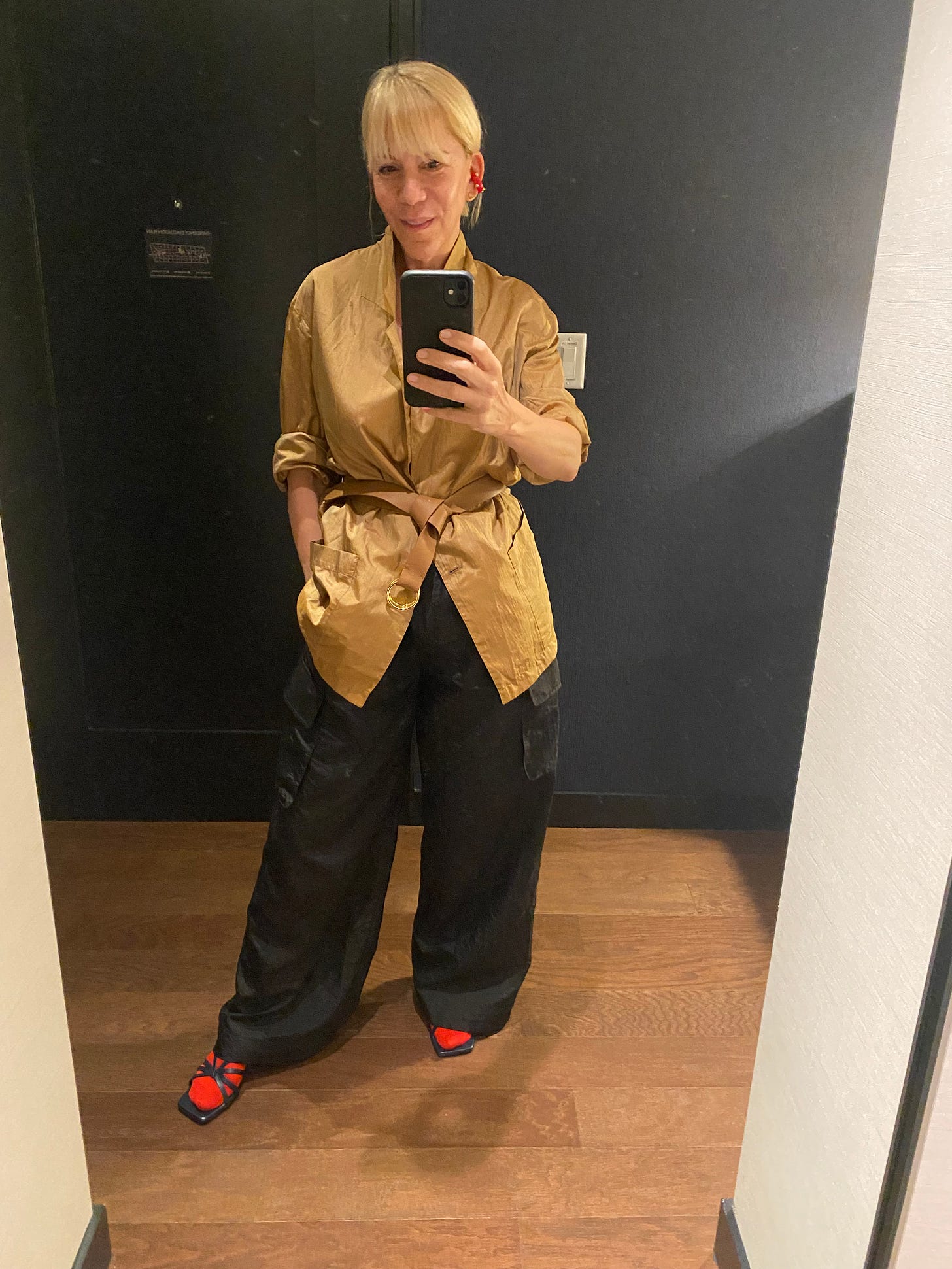

Loved this. The principles start feeling instinctive after practicing them for a while but it’s always great to revisit the theory
Somebody has been a diligent student of Tibi style classes 😏 it’s crazy how much Tibi methodology helped me evolve and understand my style and myself 👌🏻